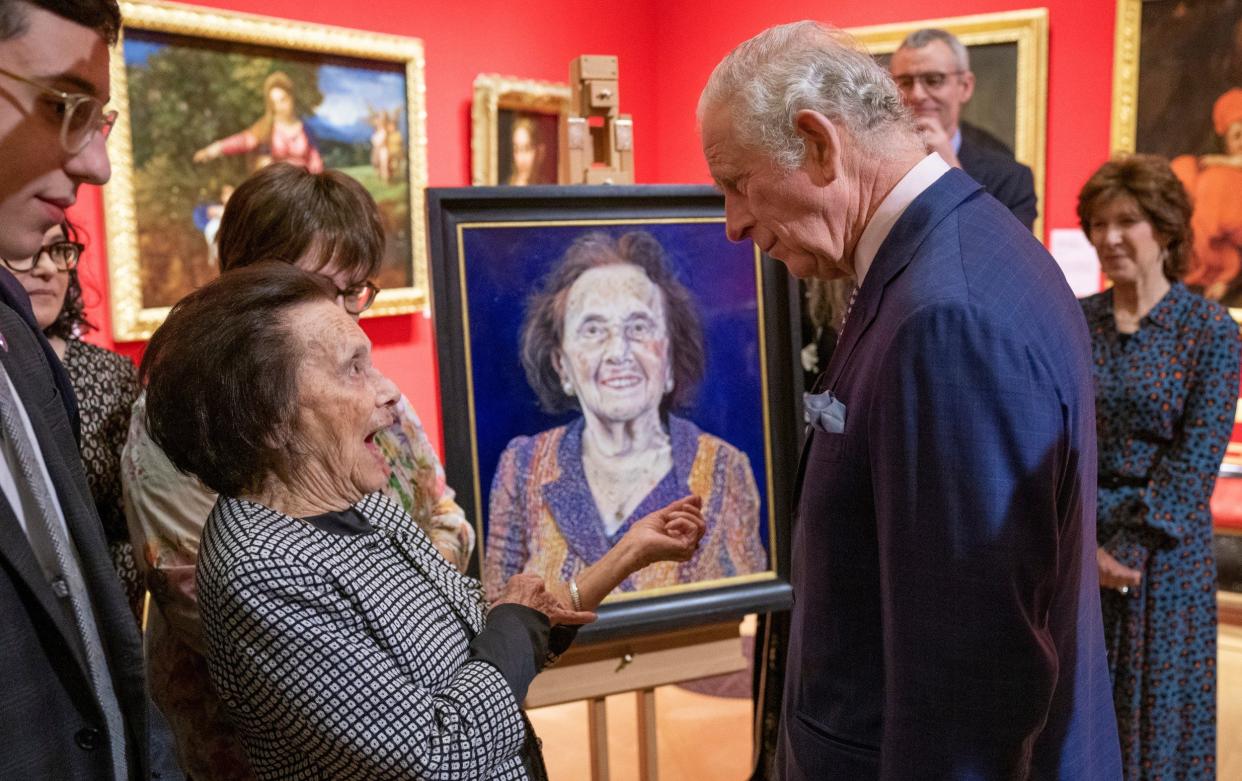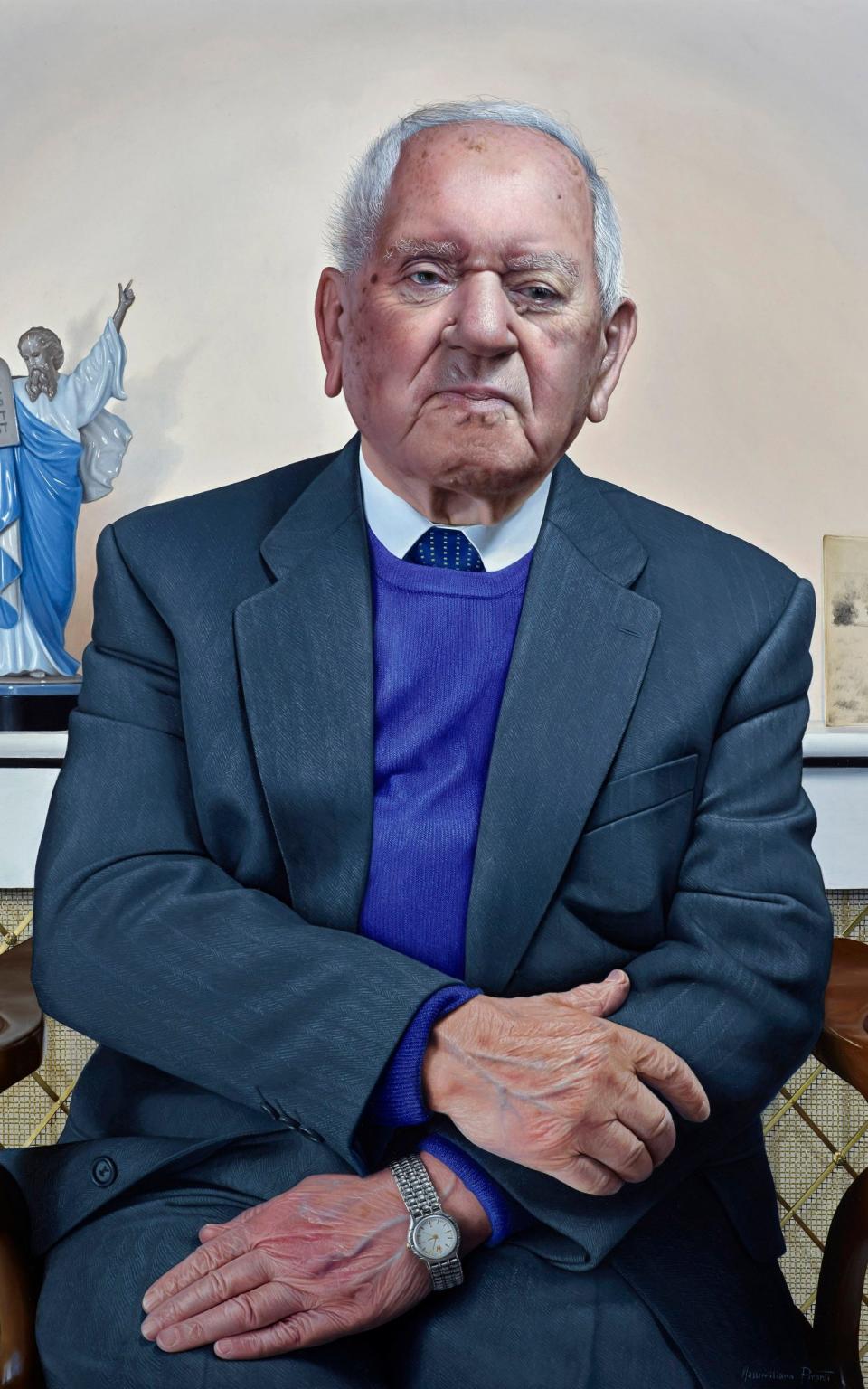Prince Charles’s Seven Portraits: Surviving the Holocaust is a majestic show of unbroken spirits

- Oops!Something went wrong.Please try again later.
- Oops!Something went wrong.Please try again later.
According to the German philosopher Theodor Adorno, to write poetry after Auschwitz was “barbaric”. What, though, about painting a picture? To mark this year’s Holocaust Memorial Day, the Prince of Wales commissioned a group of artists, some associated with his Drawing School, to portray seven Holocaust survivors. The results go on show at the Queen’s Gallery at Buckingham Palace today, while a television documentary following their creation, and telling the survivors’ stories, will air tonight on BBC Two.
Part of me had feared that this special display would be aesthetically sub-par. In the event, though, it proves memorable for all the right reasons, thanks to the strength of both the artists selected for the project – among them the respected contemporary painters Ishbel Myerscough, Jenny Saville and Stuart Pearson Wright – and, of course, the sitters, whose uplifting resilience is immediately apparent. The power of this small exhibition is derived as much from their personal histories as it is from the artistic skill on show.
There are no tears or torment; no howls of anguish or gnashing of teeth. Rather, we encounter seven dignified, (mostly) compelling, and (in several cases) extravagantly moving portraits; they feature four men and three women, the youngest born in 1930, hung together in the refined setting of the gallery’s Redgrave Room, which imitates the work of the architect John Soane.
In the case of Myerscough’s stand-out, bust-length portrait, which depicts the oldest of the sitters, Lily Ebert (née Engelman), who was born in Hungary in 1923, we encounter something that confounds our expectations altogether: a stunning image of a radiant nonagenarian, set against a background of rich royal blue, in the manner of Holbein. For all the gravity of the occasion, Ebert stares back at us with a massive, megawatt grin. Apparently, in real life, despite being knee-high to a grasshopper, she’s a dynamo, and has become an unlikely TikTok star.
This is a fabulous picture, capturing Ebert’s charismatic spirit: Myerscough has clearly had fun with the flickering floral pattern of her sitter’s chic “French dress” (in a lovely, intimate touch, a hint of her undergarment is visible, poking out), as well as the striking tonal contrast of her mottled skin, which appears as visually splendid as, say, a leopard’s hide. If that simile sounds dehumanising, I assure you the picture has the opposite effect.

Its fulcrum is Ebert’s gleaming pendant, which Myerscough cleverly picks out in gold leaf so that its raised surface catches the eye. Incredibly, throughout her time at Auschwitz, Ebert clung onto this necklace, a gift from her mother (who died in the camp, along with her youngest sister and brother), by concealing it first within the heel of a shoe and then inside her daily bread ration. It’s tiny and battered, but still brilliant, like her. Auschwitz was liberated in 1945, and she has worn it ever since.
Myerscough isn’t the only artist to depict a twinkling sitter. For instance, in his hyper-realistic portrait, which recalls the icily beautiful (and, today, underappreciated) work of Meredith Frampton, and contains a bravura study of the tissue-papery, translucent quality of ageing hands, the self-taught Italian artist Massimiliano Pironti presents an elegant, suited man, Arek Hersh, who’s struggling to suppress a giggle while sitting alone in his dining room.
Given that, according to the label, Hersh “endured suffering and brutality of unimaginable magnitude” during the war, what’s so funny? To me, his half-smile is a quiet recognition of the following fact: that, despite everything thrown at him by the Nazis, whose wicked regime was obliterated long ago, he won – simply because he survived.
Until February 13. Tickets: 0303 123 7300; rct.uk

